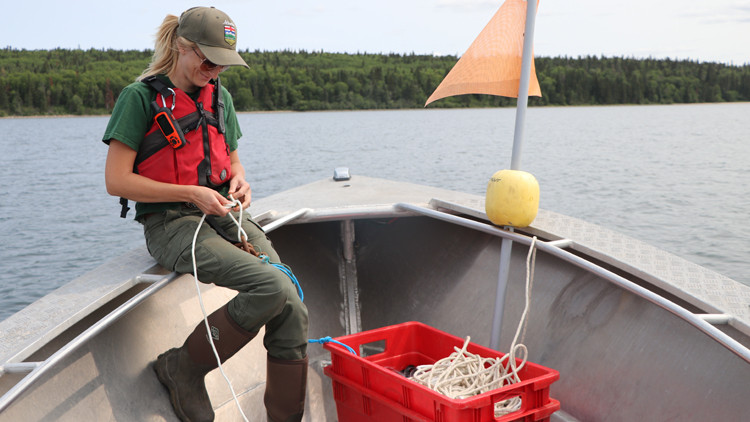Government mail service may be affected by the Canada Post labour disruption. Learn about how critical government mail will be handled.
Overview

Summer Profundal Index Netting (SPIN) is an adaptable methodology that can be used to assess Lake Trout populations in a wide range of lake sizes.
Because gill nets are set for a relatively short period of time (typically 2 hours), the SPIN method provides a low mortality option for these sensitive populations of highly prized sportfish.
- Video | Summer Profundal Index Netting
Data collected through SPIN
During a SPIN survey, biologists collect data on fish populations including:
- the number and species of fish caught
- the weight and length of each individual fish
Additional biological data (age, gender and maturity) is only collected from mortalities, which tend to be very low using this method. This information is used to determine the status of the fish population.
Using the survey data
Catch rates
Catch rates (number of fish captured per unit of effort) of lake trout are a measure of the population’s abundance, with higher catch rates indicating there are more fish in the lake.
Fish age and size distribution
Length and age of fish show us the structure of a population. For example:
- Few fish living to a large size or an old age can indicate an overharvest issue.
- Too few small or young fish can indicate an issue with habitat and spawning success.
Lake survey data and the Fish Sustainability Index
Lake survey data, as well as data on water quality, access, development, and habitat threats, are used to inform Alberta's Fish Sustainability Index (FSI). The FSI gives each population a score from very low to very high risk to sustainability.
The FSI brings consistency to individual fish stock assessments and provides a province-wide evaluation of the status and sustainability of Alberta fish species.
Contact
Connect with Environment and Protected Areas Outreach Services team:
Hours: 8:30 am to 4:30 pm (open Monday to Friday, closed statutory holidays)
Email: [email protected]